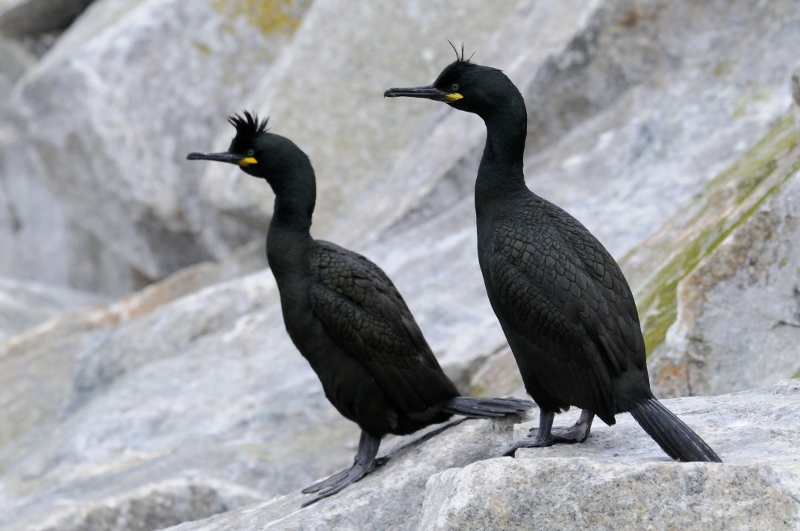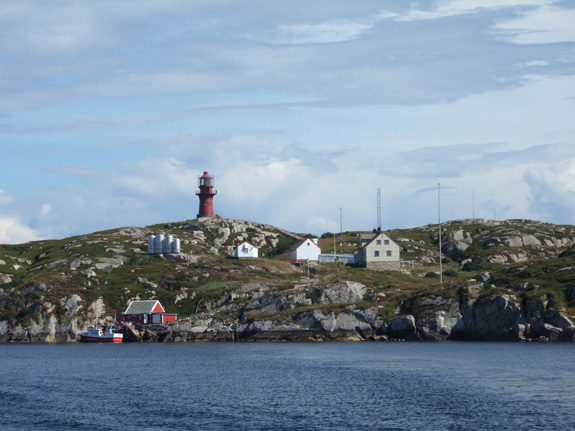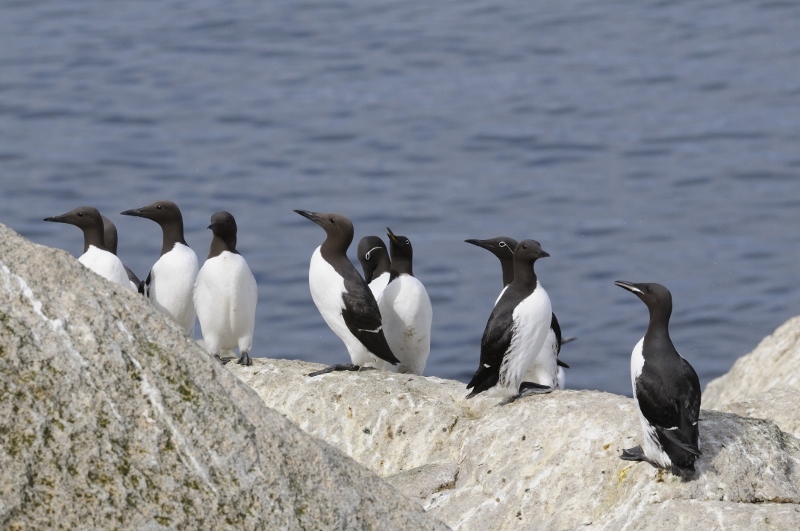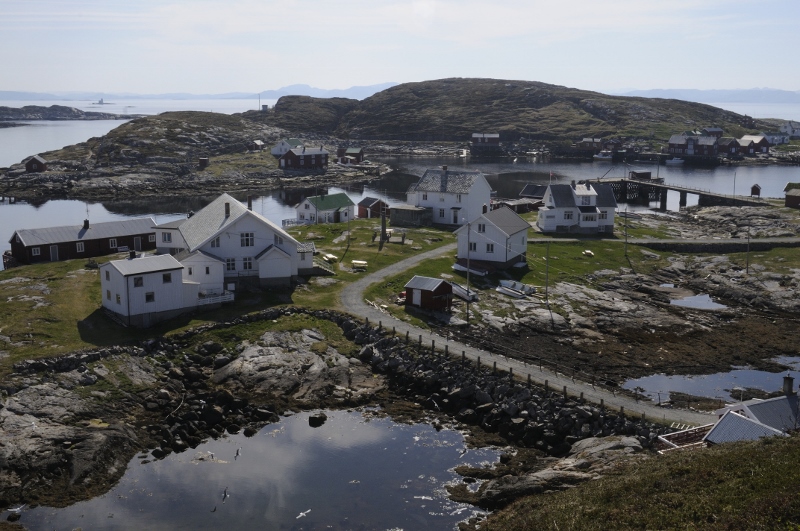Key site Sklinna
Sklinna is the only seabird colony with a complete set of the common bird cliff species between Runde and Røst, and is, as such, the most important seabird colony in Central-Norway. It was therefore a natural choice as a key site. On Sklinna, seabirds have been monitored and studied annually since 1980. Sør-Gjæslingan, far south in Vikna municipality, became part of the Sklinna key site in 2011. Contact person: Nina Dehnhard, NINA
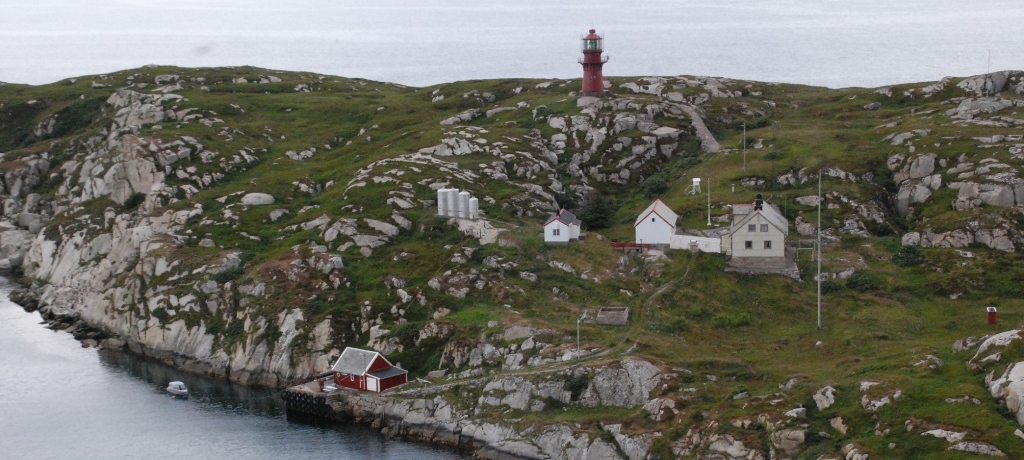
Location and description
Sklinna (65° 13’ N, 10° 58’ E) is an archipelago in Leka municipality in Trøndelag. This archipelago lies approximately 40 km from the mainland and approximately 20 km beyond the Vikna archipelago. The island is relatively close to the fishing grounds, and at the end of the 19th century, 26 people lived there. The place had its days of glory around 1900, when more than 100 boats and 600 people took part in the annual spring fishery. In those days, there was a shop and a fish oil factory, and Sklinna was a permanent port of call for the local passenger boat. Around 1920, 18 fishermen’s shacks still remained, but they have been gradually washed away by winter storms. The last one was taken by the New Year storm in 1991/92. Since 2003, the whole archipelago has been protected as a nature reserve and attained Ramsar-status in 2011. The nature reserve covers an area of 5.9 km2, and the land area covers 1.1 km2. With the exception of some small areas at Heimøya (“the lighthouse island”), all traffic is prohibited on Sklinna from 15 April to 31 July (31 August in the puffin colony). Sklinna is situated on a shallow plateau in the otherwise deep seascape surrounding the island.
Sør-Gjæslingan (64° 44’ N, 10° 46’ E) is an old fishing village far south in Vikna municipality. One of the largest colonies of black-legged kittiwakes in the county is located here, and this fishing village was included in the Sklinna key site when the kittiwakes stopped breeding at Sklinna.
Access
IOne can only access Sklinna by boat. A stretch of rough sea must be crossed during the passage from Rørvik or Leka, and the only good anchorage is the harbour at Heimøya. There is no public overnight accommodation. The archipelago is protected as a nature reserve, and special permission is required for anyone who wants to move outside marked paths within the breeding season for birds. Sør-Gjæslingan can be accessed by boat, either privately or with the local ferry.
Wildlife
Sklinna has one of the world’s largest colonies of European shags Phalacrocorax aristotelis. In good years, more than 3000 pairs can be found here. Common guillemots Uria aalge also breed here, and black guillemots Cepphus grylle thrive on the island since there are no longer any predatory mammals such as mink, otter, rats and mice. Among the other seabird species breeding on Sklinna, are the great cormorant P. carbo, Atlantic puffin Fratercula arctica, razorbill Alca torda, and several hundred pairs of common eider Somateria mollissima, herring gulls Larus argentatus and great black-backed gulls L. marinus. Occasional pairs of northern fulmar Fulmarus glacialis, common gull L. canus, lesser black-backed gull L. fuscus and European storm-petrel Hydrobates pelagicus also breed on the island. Black-legged kittiwakes Rissa tridactyla bred on Sklinna until 2010.
Of mammals, there are frequent observations of grey seals Halichoerus grypus, which also pup on Sklinna. Harbour seals Phoca vitulina are seen less frequently, and one can occasionally observe harbour porpoises Phocoena phocoena and killer whales Orcinus orca. In 1995, even a walrus Odobenus rosmarus was observed out there.
Ornithologists visit Sklinna regularly in the autumn, when rare bird species can often be seen as they pass through on migration.
Sør-Gjæslingan has a diverse fauna, with black-legged kittiwakes dominating in summer.
Human activity
After the lighthouse was automated in 2004, Sklinna has had no permanent residents. Small fishing boats use the harbour all the year round, and a submerged keep-net for saithe is normally established in the harbour in spring. This generates a certain level of activity, and is especially disturbing for the seabirds when the net is being moored. Tourists visit by boat on rare occasions during the summer. Sør-Gjæslingan is a popular vacation site in summer.
Fieldwork
Seabird research and monitoring have been conducted on Sklinna since the early 1980s. The research activity was especially intense in the 1990s and early 2000s, when the University of Trondheim (NTNU) conducted a series of studies of seabird physiology and ecotoxicology. The extremely isolated location of this area and the total absence of four-legged predators allow the seabirds to breed freely without any disturbance. Seabird research on Sklinna got a new impetus when the locality was established as a SEAPOP key site in 2007. Since 2011, fieldwork has also included population monitoring and research on black-legged kittiwakes at Sør-Gjæslingan.
All fieldwork is based in the lighthouse keepers’ quarters, which NINA is fortunately allowed to rent through a good cooperation with the County governor of Trøndelag and The Norwegian Coastal Administration – thank you both! In the keepers’ quarters there is access to all facilities (electricity, water, WiFi) necessary to conduct efficient research and monitoring. The project administers a small boat (Buster XL) for transporting field personnel within the archipelago and for carrying goods and personnel between Rørvik and Sklinna.
Fieldwork starts in early May with the setup of monitoring cameras, estimations of black guillemot and common eider populations and kittiwake counts at Sør-Gjæslingan. From early June to end of July, the station is fully manned, usually by 3-4 persons.
